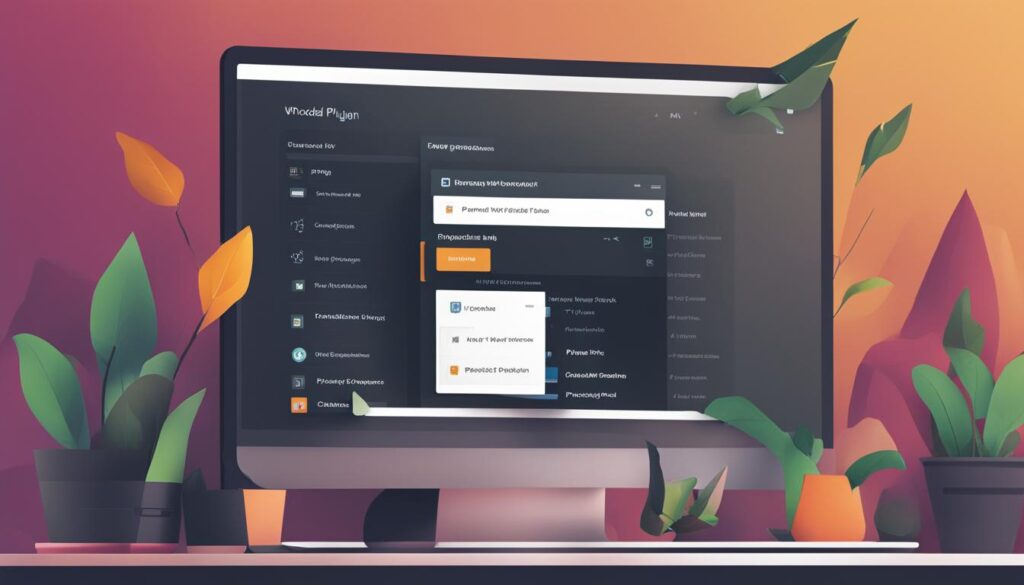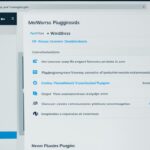Table of Contents
After installing WordPress, the first thing every beginner needs to learn is how to install a WordPress plugin. In simple words, WordPress plugins are like apps for your WordPress website. They allow you to add new features to WordPress like a contact form, slideshow, shopping cart, and more. There are thousands of free and paid plugins available for WordPress. In this step-by-step guide, we will show you how to install a WordPress plugin.
Whether you’re a blogger, small business owner, or an entrepreneur, installing WordPress plugins is essential for enhancing the functionality of your website. With plugins, you can customize your site to meet your specific needs and provide a better experience for your visitors. From adding social media sharing buttons to improving SEO, plugins offer endless possibilities.
In this comprehensive guide, we will cover different methods of installing WordPress plugins, including finding and installing plugins from the WordPress plugin directory, uploading and installing premium plugins, manual installation using FTP, and managing activated plugins. Additionally, we will provide tips for choosing the right plugins and address common questions about plugin installation.
By following this step-by-step guide, you’ll gain the knowledge and confidence to install and manage plugins like a pro, taking your WordPress website to the next level. Let’s get started!
Finding and Installing Plugins from WordPress Plugin Directory
When it comes to adding new features and functionality to your WordPress website, installing plugins is the way to go. The WordPress plugin directory is a treasure trove of free and premium plugins that can enhance your site’s capabilities. In this section, we’ll explore how to find and install plugins from the WordPress plugin directory.
To get started, log in to your WordPress dashboard and navigate to the “Plugins” section. From there, click on the “Add New” button to access the plugin search feature.
Using the search bar, you can look for specific plugins by entering relevant keywords or plugin names. Let’s say you want to install a contact form plugin. Simply type “contact form” in the search bar, and WordPress will display a list of plugins that match your query.
“Installing plugins from the WordPress plugin directory is quick and hassle-free.”
Once you’ve found the desired plugin, click on the “Install Now” button. WordPress will automatically download and install the plugin on your website.
Once the installation is complete, click on the “Activate” button to activate the plugin. After activation, you can access the plugin’s settings and start utilizing its features.
Installing plugins from the WordPress plugin directory is not only convenient but also ensures the plugins are vetted and secure. Additionally, most plugins available in the directory are free, making it an affordable way to enhance your website’s functionality.
Uploading and Installing Premium Plugins
Paid WordPress plugins offer advanced functionalities and customizations that can take your website to the next level. Unlike free plugins, premium plugins are not listed in the WordPress plugin directory. To install a premium plugin, you will need to follow these steps:
- 1. Download the Plugin: Visit the official website or marketplace from where you purchased the premium plugin. Look for the option to download the plugin file, which is usually provided as a zip file.
- 2. Access Your WordPress Dashboard: Log in to your WordPress dashboard, where you can manage your website’s content and settings.
- 3. Navigate to the “Plugins” Section: In the WordPress dashboard, click on “Plugins” in the left-hand menu.
- 4. Click on “Add New”: Once in the “Plugins” section, click on the “Add New” button at the top of the page.
- 5. Upload the Plugin: On the “Add Plugins” page, click on the “Upload Plugin” button, which is located near the top of the screen.
- 6. Choose the Plugin File: Click on the “Choose File” button and select the plugin file you downloaded earlier from your device.
- 7. Install and Activate the Plugin: After selecting the plugin file, click on the “Install Now” button to begin the installation process. Once the plugin is installed, click on the “Activate” button to activate it on your WordPress site.
Once activated, the premium plugin will be ready to use, and you can access its features and settings through the dedicated menu in your WordPress dashboard.
To give you a visual representation of the steps involved in uploading and installing premium plugins, here’s a simple table:
| Steps | Description | Example |
|---|---|---|
| 1 | Download the plugin from the source | Download a premium plugin file as a zip file |
| 2 | Access your WordPress dashboard | Login to your WordPress admin panel |
| 3 | Navigate to the “Plugins” section | Click on the “Plugins” option in the left-hand menu |
| 4 | Click on “Add New” | Access the “Add Plugins” page |
| 5 | Upload the plugin file | Choose the plugin file from your device |
| 6 | Install and activate the plugin | Click on “Install Now” and then “Activate” |
To help you visualize the process, here is an image that summarizes the steps involved in uploading and installing premium plugins:

Cautions and Considerations
When installing premium plugins, always ensure that you download them from reputable sources to avoid any security risks or compatibility issues. Additionally, be mindful of any licensing requirements or restrictions that may apply to the plugin you purchase.
By following these steps, you can successfully upload and install premium plugins in WordPress, enhancing your website’s functionality and customization options.
Manual Installation of Plugins using FTP
In some cases, you may need to manually install a WordPress plugin using FTP (File Transfer Protocol). This method is useful when the plugin you want to install is not available in the WordPress plugin directory or when you encounter compatibility issues with the plugin installer. To manually install a plugin using FTP, follow the step-by-step guide below:
- Download the plugin file from the source. Usually, the plugin file will be in a compressed format such as ZIP.
- Extract the plugin file on your computer using any file extraction software.
- Connect to your website using an FTP client. If you don’t have an FTP client installed, you can download one like FileZilla.
- Navigate to the /wp-content/plugins/ folder on your web server.
- Upload the extracted plugin folder to the /wp-content/plugins/ folder on your web server.
- Once the upload is complete, go to the “Plugins” section in your WordPress dashboard.
- Look for the newly uploaded plugin in the list of plugins.
- Click on the “Activate” button to activate the plugin.
By following these steps, you can manually install a WordPress plugin using FTP. This method gives you more control over the plugin installation process and is particularly useful for advanced users or specific plugin requirements.
Benefits of Manual Installation using FTP
Manual installation of plugins using FTP offers several benefits:
- Flexibility: With FTP, you can directly upload and install plugins that are not available in the WordPress plugin directory.
- Compatibility: In rare cases when plugin installers don’t work or encounter compatibility issues, FTP installation ensures a successful installation.
- Precise Control: FTP installation allows you to place the plugin files exactly where you want them, enabling advanced customization.
While manual installation using FTP may require some technical knowledge, it provides an alternative method for installing plugins in WordPress.
| Advantages | Disadvantages |
|---|---|
| Allows installation of plugins not found in the WordPress plugin directory | Requires more technical knowledge and familiarity with FTP |
| Provides control over plugin file location and customization options | May be more time-consuming compared to other installation methods |
| Useful in cases of compatibility issues or advanced plugin requirements | Not suitable for beginners or users uncomfortable with FTP |
Managing Activated Plugins
After installing and activating a plugin, it is important to manage its settings to ensure optimal functionality. Each plugin comes with its own set of settings that can be accessed through a dedicated menu in the WordPress dashboard. To manage your activated plugins, follow these steps:
- 1. Log in to your WordPress dashboard.
- 2. Click on the “Plugins” section.
- 3. Here, you will find a list of all the installed plugins on your website.
- 4. To activate a plugin, simply click on the “Activate” button next to the plugin’s name.
- 5. To deactivate a plugin, click on the “Deactivate” button. This will temporarily disable the plugin’s functionality without completely removing it from your site.
- 6. To permanently remove a plugin, click on the “Delete” button. This will uninstall the plugin from your WordPress installation.
It is worth noting that some plugins may have additional settings that can be accessed by clicking on the “Settings” or “Configure” link next to the plugin’s name in the “Plugins” section. These settings allow you to customize the plugin’s behavior according to your specific requirements.
Properly managing your activated plugins is essential for maintaining a secure and efficient WordPress website. By activating and deactivating plugins based on your needs, and regularly reviewing and updating their settings, you can ensure that your website operates smoothly and provides the best user experience.
Plugin Management
| Plugin Management Tasks | Description |
|---|---|
| Activate | Enables the functionality of a plugin on your website. |
| Deactivate | Temporarily disables the functionality of a plugin without uninstalling it. |
| Delete | Completely removes a plugin from your WordPress installation. |
Tips for Choosing the Right Plugins
With thousands of plugins available, choosing the right ones for your website can be a daunting task. To help you make the best decisions, consider the following tips for plugin selection:
- Read Reviews and Ratings: Before installing a plugin, take the time to read reviews and ratings from other users. This will give you valuable insights into the plugin’s performance, reliability, and user-friendliness.
- Check Compatibility: Ensure that the plugin you are considering is compatible with your version of WordPress. This information is usually provided in the plugin’s description or on the plugin developer’s website.
- Look for Active Development: A plugin that is actively developed and maintained is more likely to be reliable and secure. Check the plugin’s update history and the developer’s responsiveness to user feedback.
- Consider Reputation and Popularity: Plugins that have a good reputation and are widely used by the WordPress community are often a safer choice. Look for plugins from reputable developers or those recommended by trusted sources.
- Test on a Staging Site: Before installing a plugin on your live site, it’s a good idea to test it on a staging site. This allows you to evaluate its performance and compatibility without affecting your main website.
By following these tips, you can make informed decisions when choosing WordPress plugins, ensuring that they enhance your website’s functionality and align with your specific needs.
Common Questions About Installing WordPress Plugins
As beginners, you may have several questions about installing WordPress plugins. Here are some common FAQs:
-
1. How do I find and install plugins from the WordPress plugin directory?
To find and install plugins from the WordPress plugin directory, follow these steps:
- Go to your WordPress dashboard.
- Click on “Plugins” and then “Add New”.
- Use the search bar to find the plugin you want to install.
- Click on “Install Now” and then “Activate” the plugin.
-
2. Can I install premium plugins in WordPress?
Yes, you can install premium plugins in WordPress. To install a premium plugin, follow these steps:
- Download the plugin file from the source.
- Go to your WordPress dashboard and click on “Plugins” and then “Add New”.
- Click on the “Upload Plugin” button and select the plugin file you downloaded.
- Click on “Install Now” and then “Activate” the plugin.
-
3. How do I manually install plugins using FTP?
If you need to manually install a WordPress plugin using FTP, follow these steps:
- Download the plugin file and extract it on your computer.
- Connect to your website using an FTP client.
- Navigate to the “/wp-content/plugins/” folder.
- Upload the extracted plugin folder to this folder on your web server.
- Go to the “Plugins” section in your WordPress dashboard and activate the plugin.
-
4. How do I manage activated plugins in WordPress?
To manage activated plugins in WordPress, follow these steps:
- Go to the “Plugins” section in your WordPress dashboard.
- Here, you can activate, deactivate, and delete plugins as needed.
- Each plugin also has its own set of settings, which can usually be accessed through a dedicated menu in the WordPress dashboard.
These are just a few of the frequently asked questions about installing WordPress plugins. If you have any other inquiries or need further assistance, don’t hesitate to consult the official WordPress documentation or seek help from the WordPress community.
Conclusion
Installing WordPress plugins is a crucial step in enhancing the functionality and capabilities of your website. Whether you opt for free or premium plugins, it is essential to follow the proper steps and choose high-quality options.
By referring to this comprehensive guide, you can easily install and manage plugins, regardless of whether you utilize the WordPress plugin directory or manual methods. Remember to consider factors such as reviews, compatibility, active development, support, reputation, and popularity when selecting plugins for your website.
With the right plugins in place, you can take your WordPress site to the next level, adding features, improving performance, and providing a better user experience. Don’t hesitate to explore the vast array of options available and make the most of the plugin installation process. Enjoy expanding the functionalities of your WordPress site!
FAQ
How do I install a WordPress plugin?
There are several methods to install a WordPress plugin. The easiest way is to use the plugin search feature in the WordPress plugin directory. Simply go to your WordPress dashboard, click on “Plugins,” and then “Add New.” You can search for the plugin you want to install, click on “Install Now,” and then “Activate” the plugin.
Can I install paid plugins using the same method?
No, paid plugins are not listed in the WordPress plugin directory. To install a premium plugin, you need to first download the plugin file from the source (usually a zip file). Then, go to your WordPress dashboard, click on “Plugins,” and then “Add New.” From there, click on the “Upload Plugin” button and select the plugin file you downloaded. Click on “Install Now” and then “Activate” the plugin.
What if I need to manually install a WordPress plugin using FTP?
In some cases, you may need to manually install a plugin using FTP (File Transfer Protocol). To do this, download the plugin file from the source and extract it on your computer. Connect to your website using an FTP client, navigate to the /wp-content/plugins/ folder, and upload the extracted plugin folder to this folder on your web server. Go to the “Plugins” section in your WordPress dashboard and activate the plugin.
How do I manage activated plugins in WordPress?
To manage your activated plugins, go to the “Plugins” section in your WordPress dashboard. Here, you can activate, deactivate, and delete plugins as needed. Each plugin also has its own set of settings, which can usually be accessed through a dedicated menu in the WordPress dashboard.
How do I choose the right plugins for my website?
When selecting plugins, consider reading reviews and ratings, checking compatibility with your WordPress version, looking for active development and support, considering the plugin’s reputation and popularity, and testing plugins on a staging site before installing them on your live site.
What are some common questions about installing WordPress plugins?
Some common FAQs include: How do I install plugins? Can I use the same method for paid plugins? How do I manually install a plugin using FTP? How do I manage activated plugins? How do I choose the right plugins for my website?













